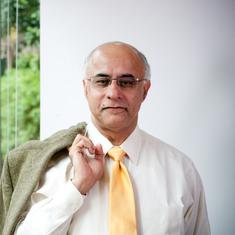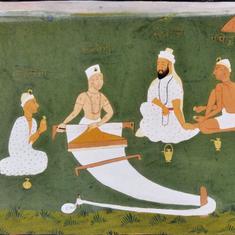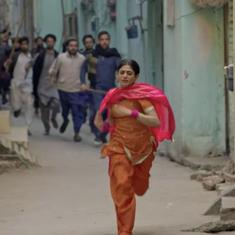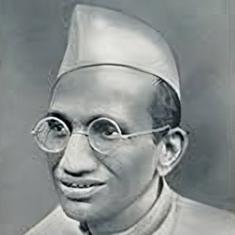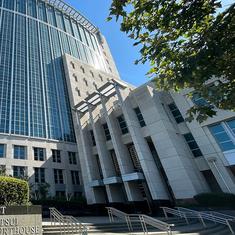“India and Brazil move to a common rhythm,” Sharma wrote in the article, which was widely shared in global financial capitals. "In India, the Commonwealth Games came to be seen as a surprising success, but the scandals helped to ignite an anti-government revolt that culminated in the crushing defeat of the ruling Congress Party in May. A similar scenario could unfold in Brazil."
Then he made a prophecy. “Many Brazilians see hope for change in the example of India. There, popular disgust with the Congress party’s mismanagement of the economy led to its May defeat at the hands of Narendra Modi, a strongman with a reputation for running an efficient government. Brazilian investors now look at how the stock market has surged behind Modi and figure an opposition win can trigger similar results in Brazil…The leading Brazilian opposition figure is Aecio Neves, who like Modi was a state governor known for getting things done. His finance minister would be Arminio Fraga, a key member of the team that in the 1990s helped contain hyperinflation, at a time when Brazilian businesspeople worry openly that ill-advised government spending is turning their country into 'the next Venezuela'."
Failed prediction
But on Sunday night, when the Brazilian election results were announced, Sharma’s prophecy failed. Just as he was factually wrong about “popular anger” against the World Cup and “economic mismanagement”, the New York-based fund manager’s prediction was off the mark too. On Sunday, President Dilma Rousseff of the Workers Party won the re-election with 52% votes and Neves, of deceptively-named Social Democratic Party of Brazil, managed a little over 48% votes. He lost to Rousseff even his home state of Minas Gerais (It would be akin to Modi losing in Gujarat).
Sharma’s prognostication was quite predictable. It was the prophecy of a Wall Street shark who sees countries as markets that should be run by “business-friendly” regimes and not by governments that believe in spending money on social welfare. The gist of the article was simple: the Rousseff government would play a price for following “socialist policies”, and it was time for the country to change course, like India did in May, by electing a “pro-business” leader.
This Brazilian election was not just about choosing a new president. It was all about the future course of Brazil as a country. On one side was Rousseff, who is hated by the markets for protecting jobs and expanding social welfare programmes. On the other side was Neves, who is a darling of business lobby groups who expected him to “liberalise” the Brazilian economy. In that sense, this Brazilian election was quite similar to the Indian election.
Following India
Just a year ago, Brazil seemed to be following India’s lead. Like Anna Hazare’s anti-corruption movement of 2011, the Brazilian street swelled with anger in June-July 2013. Though there was no Hazare-like leader here, the sentiment on the street and the profile of the “revolutionaries” was similar to that of the “Indian Spring”. Even as the western media was screaming of a “massive unrest” against the government, a survey by Datafolha, one of the biggest market survey firms in Brazil, revealed that the protesters mostly came from the elite: 77% with higher education, 71% first-time protesters and more than 90% white (though they form just 50% of the population). In addition, most rallies were held in the middle-class areas, far from the fringes of the city where the majority of poor, working-class and black people live.
The similarities didn’t end there. Even the slogans of protest were similar: “Change Brazil” and “I want my country back." Just like India, the beneficiaries of 10 years of economic boom in Brazil were demanding a change in the way their country functioned. The protests in Brazil and the international media coverage it received gave the impression that it was a basket case of poverty. The truth is exactly the opposite. In Brazil, more jobs are being created than US and Europe. Unemployment is down to 5%. In 10 years, the minimum wage has more than tripled. The GDP per capita is $9,000; Brazil has paid all its debts to the IMF; the proportion of debt in relation to GDP has fallen sharply; inflation is around 6%. Social welfare programmes like Bolsa Familia have lifted more than 50 million Brazilians out of poverty. By the end of this year, Brazil will be free of extreme poverty. The fact is that in its 500 years of history, Brazilians never had it so good as today.
So, what was all the rage about? Wall Street managers like Sharma would blame economic mismanagement (a euphemism for social welfare spending) for the protests. However, by using the country’s economic boom to create equality, Presidents Lula (2003-2010) and Rousseff have done something which was never done in the country’s history. Their policies have given the poor (the majority of whom are black or mixed-race people) a chance to join the Brazilian dream. This has upset the old social order. The business class here constantly complains about the country’s labour laws and how difficult it is to fire workers. Just like the Anna Hazare movement, the “Brazilian Spring” was organised and led by those who have benefitted the most from Brazil’s economic boom – the upper and middle classes – as the poor watched the circus from their favelas on the fringes of big cities.
Demands for regime change
With the groundwork for “regime change” done by upper-crust protesters, the global financial markets, international media and domestic newspapers and TV channels turned against the Workers’ Party in the election year, accusing it of corruption and blaming it for “ruining the economy”. Just when Brazil was preparing to vote, the Economist ran an editorial on “Why Brazil should reject Dilma Rousseff and elect Aecio Neves”. Likewise, the Financial Times and other western paper kept hammering the Brazilian government, just like they had done to Manmohan Singh’s government in the months leading up to the Indian election.
In India, it all went according to the script written by the likes of Sharma. In the face of a combined onslaught from the Wall Street, western newspapers and domestic TV channels, the United Progressive Alliance government began opening up various sectors of Indian economy while cutting down on public spending. But even as story after story in the international media attacked the Brazilian government for being too “protective”, President Rousseff refused to fall into the trap. On the contrary, in her election campaign, she made it clear that Brazil will deepen its social welfare programmes in the coming years. It was not a coincidence that as Rousseff’s popularity grew, the Brazilian stocks fell and the US dollar gained against the Brazilian currency.
A huge victory
On Sunday, President Rousseff’s refusal to play ball with the Wall Street manipulators resulted in her victory as those Brazilians who believe in social equality, growth with justice and independent foreign policy rallied behind her, giving her a three-million vote lead over Neves.
If the Brazilian president had taken the bait and cut down on public spending and opened up some sectors of Brazilian economy to US corporations, just like Manmohan Singh did in his last year in office, Sharma’s dark fantasy might have come true. In that case, Aecio Neves would have been elected the new president. Though Sharma likened Neves to Modi as an “efficient state governor”, he didn’t mention the real similarities between the two leaders. The western media loves to call Neves a “pro-business” leader from a centrist party, but the fact is that his right-wing party used the race card subtly to mobilise the white middle-class by scaring them about the rise of blacks in Brazilian society. (This is not very different from the way the BJP played its growth and communal card in the Indian election).
Had Neves been elected the Brazilian president, he would have cut government spending and “liberalised” the economy for the benefit of US firms. This is what Sharma was pushing for. In the TOI article, Sharma mentioned economist Arminio Fraga as the magician who would fix the Brazilian economy. He was economical with truth. Fraga’s real face was exposed by Brazilian journalist Pepe Escobar in an article for Russia Today on Monday. “With Neves, Brazil’s future Finance Minister would have been Arminio Fraga, a slick operator who, among other things, ran high-risk funds in emerging markets for George Soros," Escobar wrote. "Fraga is the proverbial Wall Street predator. With him at the Finance Ministry, think J.P. Morgan controlling Brazil’s macroeconomic policy.”
This is what the Morgan Stanley manager for emerging markets was predicting – or plotting – when he wrote about Rousseff’s imaginary downfall.
